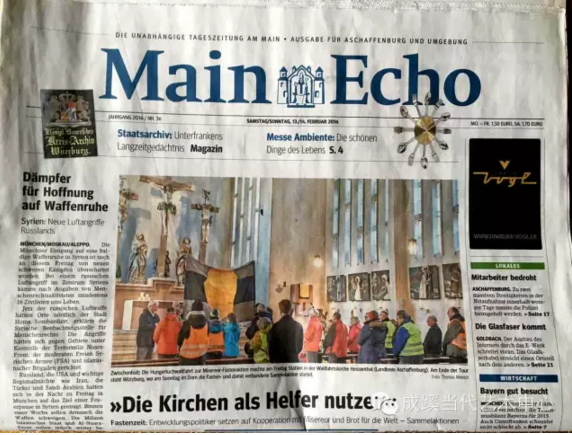As the Saint Ashes Wednesday marking the beginning of Lent, the ecumenical churches are approaching the Easter 2016. The God and Gold, image by Daozi, a professional Chinese artist, is selected as the Lenten Curtain for Churches in Germany.
Together with the record of artists, the well-known image, God and Gold, will be exhibited in the 3000 churches in Germany.
The churches reported the agenda of Lent 2016 of Church in Germany.
In 2014, Daozi was invited to work for the Lenten Curtain(Lent 2015/2016) from MISEREOR, The German Catholic Bishops’ Organization for Development.

Professor Dao Zi (this is the artist’s professional name – his real name is Wang Min or Wang Samuel) was born in Qingdao in 1956. He teaches art theory and the history of Western art at the renowned Tsinghua University in Beijing. He is editor-in-chief of various art journals. Dao Zi is a Protestant Christian whose work focuses chiefly on Christian and biblical motifs. A professor of Western art history, critic, writer and poet, he is known to the public at large in China primarily as an art critic. He has made a crucial contribution toward the development of Chinese theory of art. The distinctive feature of Dao Zi’s work is that it has roots in both Western and Chinese art history. Drawing on traditional Chinese ink painting, he infuses this with Christian elements. He draws inspiration for his ink painting from meditation.
The image, God and Gold, is well known in China from last year.

The gold symbolizes Christ made human: He whom the builders rejected has become the head of the corner (Mk 12.10). He is God’s Son who has come to bring not peace on earth, but division (Lk12.51; Mt 10.34). He is the stone we run into, an annoyance that throws us off our stride, because He demands that we make a decision: Who is your Lord? Who do you serve? God or gold? God or mammon?
Yet the rock with the metallic shimmer also symbolizes gold in its many guises, which is the sole measure of economic action, which human beings hanker for and dedicate themselves to – an idol with magical powers of attraction. Human craving has turned water, earth and heaven grey: the world is not the way God wants it to be. We are used to making compromises, but where does the compromise end, and at what point is faith itself compromised? Faith is compromised when we attach ultimate value to things that we acquire, and give our hearts to them totally. This is the moment when idols are born. Each and every one of us is then required to make a decision: ‘You cannot serve God and mammon’ (Mt 6.24).
The black of the cross emphases the perspective of suffering and the fragility of human existence, but keeps a horizon of hope open: the dark colour changes – as does the grey – and gives off light to the onlooker in fine lines and patterns.
The three red seals on the arm of the cross pointing gently upward symbolize in various ways the nails of the crucifixion, and in their threefold character the triune nature of God. Christ is the visible manifestation of the triune and loving God. On this basis, God’s workings in the world and in history can be interpreted as God turning toward us and enabling us to overcome barriers (Acts 4.31-35), create unity and find new paths toward the common good. Human life is never just life; it is always life in communion.
Based on this understanding, the image invites us to see gold in the weakness of human life: to recognize the stone for what it is, with the cross and with the suffering and with the one who is hanging on it, and to behold in HIM the truth of God (Phil 2.5-11). Jesus set an example in the way that he lived: instead of directing his gaze upward, he turned toward those right at the bottom – those foundering and in dire straits.











